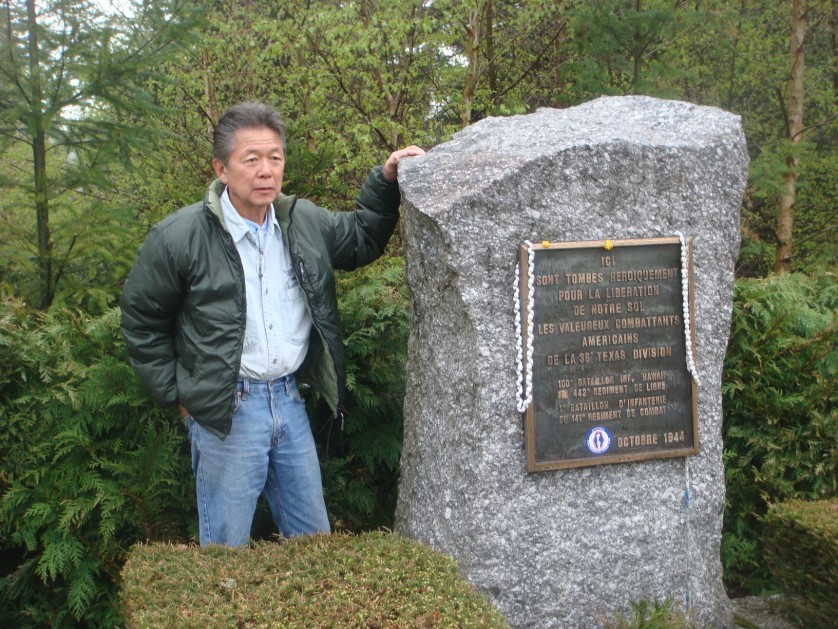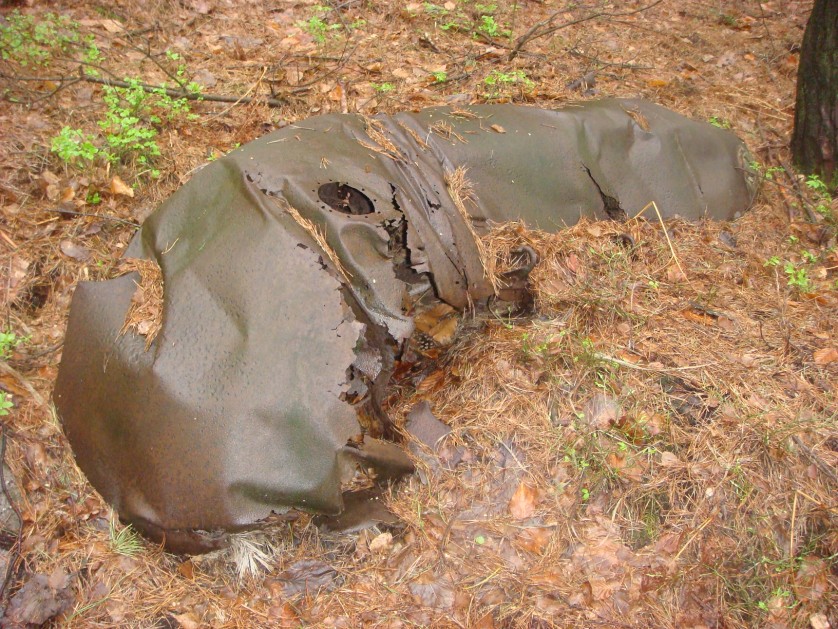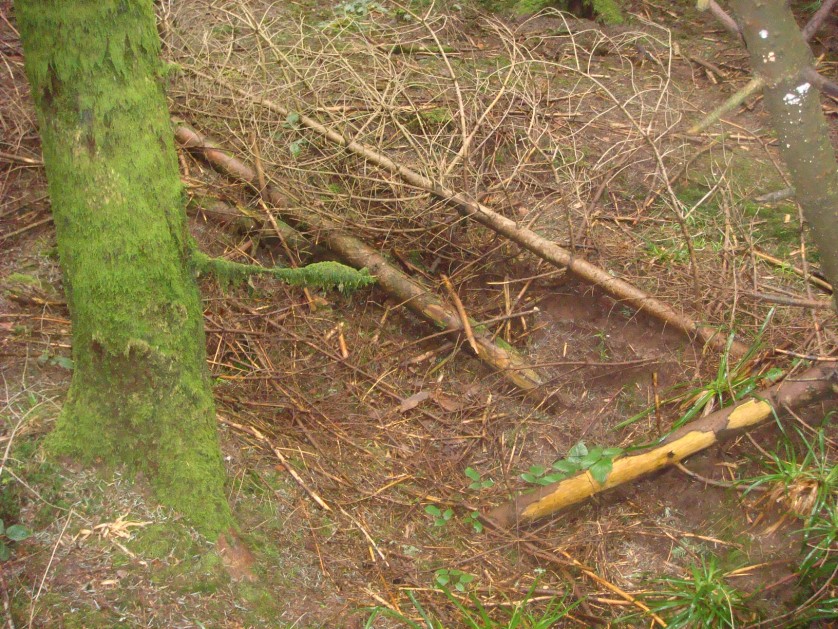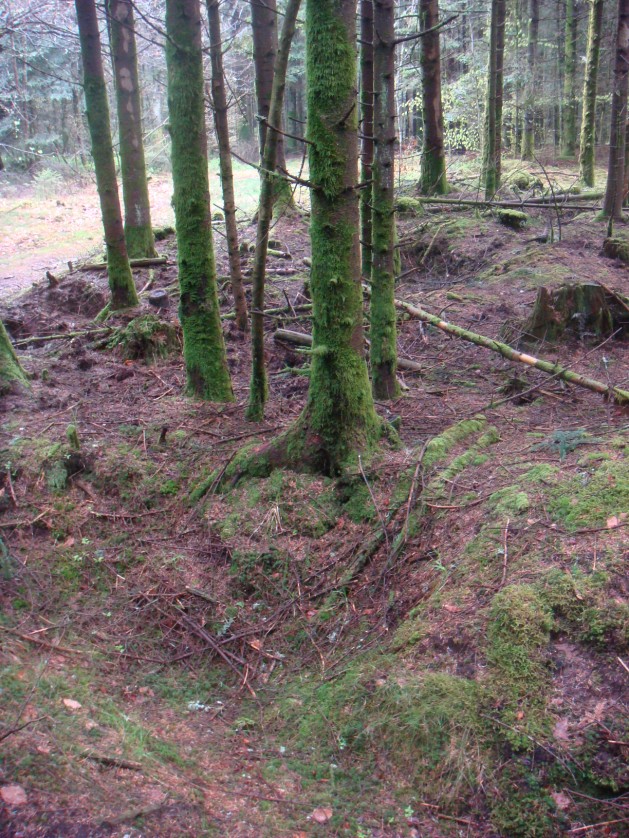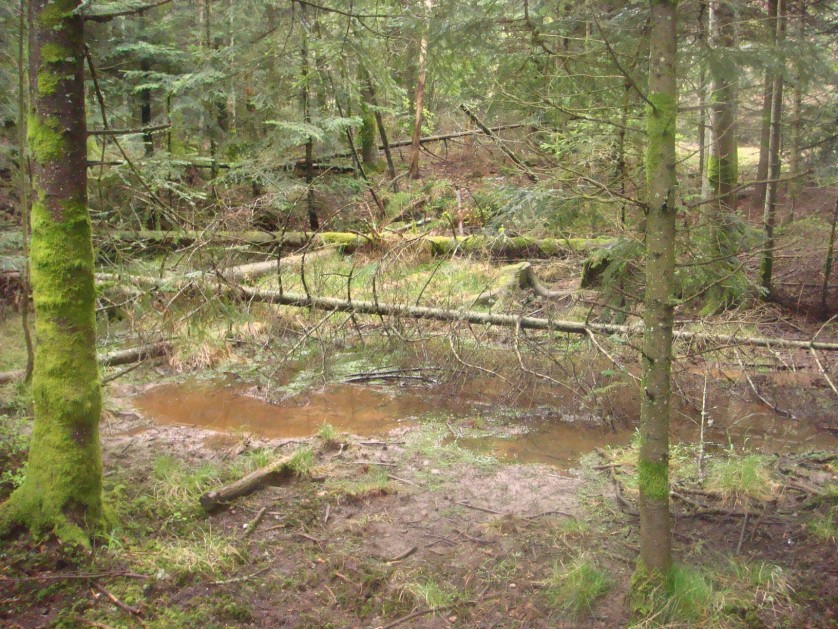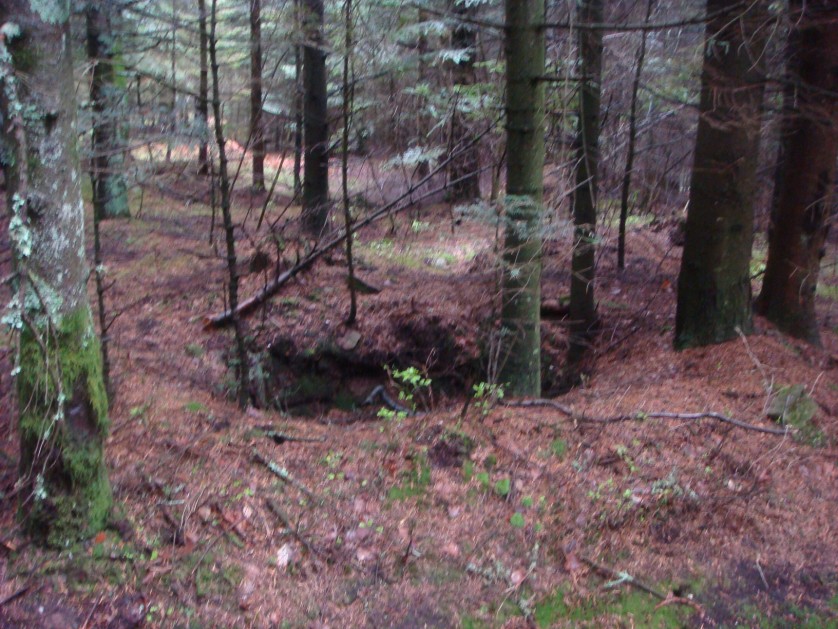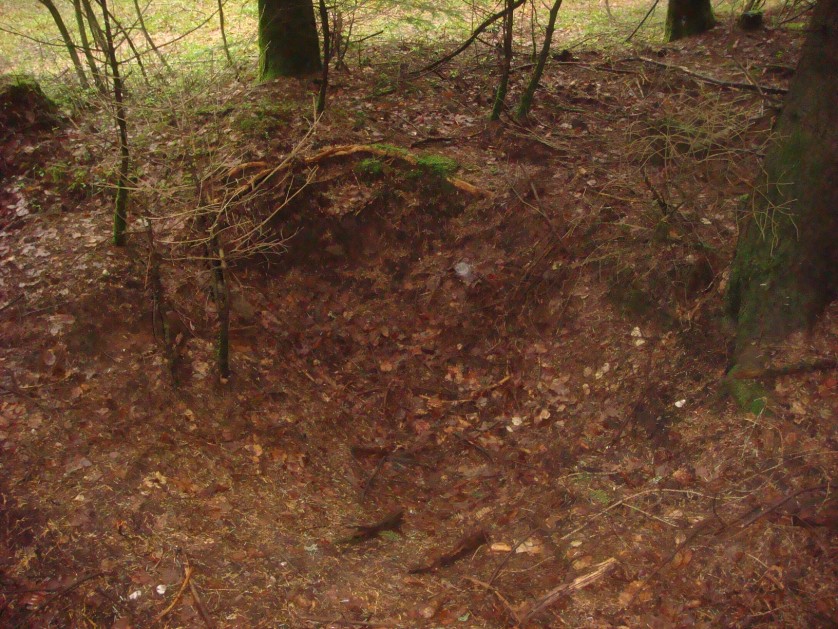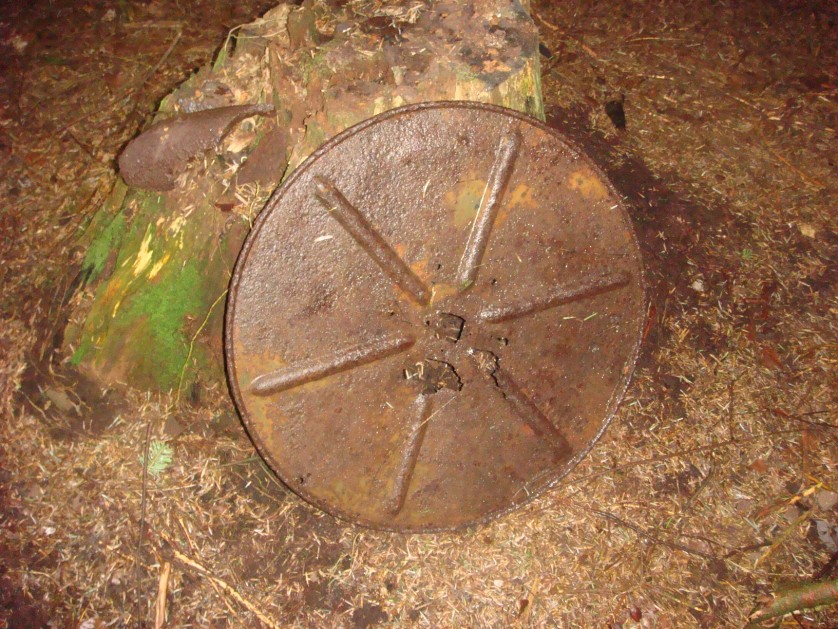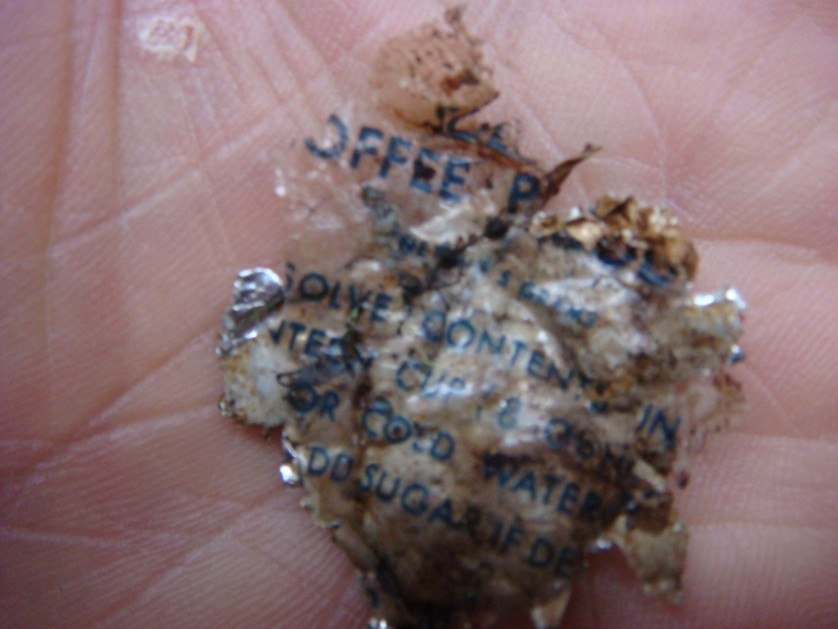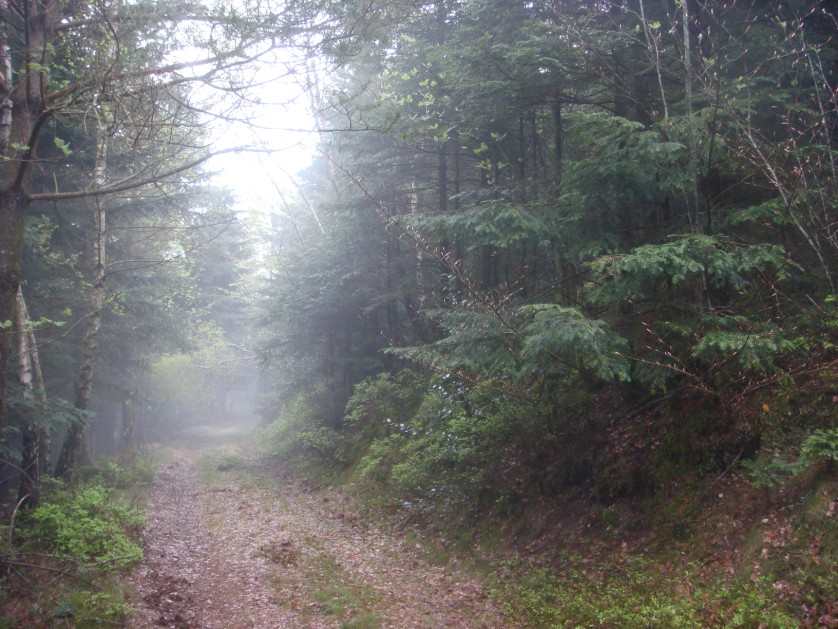04-21-2009, 08:45 AM
04-21-2009, 08:45 AM
04-21-2009, 08:46 AM
The same day, P-47 Thunderbolt planes of the 405th Fighter Squadron arrived in the sky, with belly tanks full of food, medical supplies, ammo and radio batteries. Although heavy clouds obscured the drop zone, the pilots released the belly tanks, hoping for the best. But on the ground, the men could hear as most of the tanks crashed into German positions.
Even 65 years later, we found some of the P-47 Belly tanks which were droped in order to re-supply the Lost Battaltion.
04-21-2009, 08:46 AM
The following day, Saturday, October 28th, both Battalions continued the drive forward in the teeth of stubborn resistance and heavy artillery and mortar fire. Casualties went up and up, caused largely by tree bursts, from which there was no escape. Our own artillery was active, and the Cannon Company and 4.2 mortars performed yeoman service, but the Germans were below ground, while our troops were up and moving forwards. Foxeholes still visible all over the place.
04-21-2009, 08:47 AM
04-21-2009, 08:47 AM
This water hole was the water supply of both sides - the Germans as well as the soldiers of the Lost Battaltion. On one day a Soldier of the Lost Battaltion shot a German who was just about to take water. After he shot him, the American searched the dead German and found poison - so it is most likley to assume that the German did not want to resupply his water but to poison the water hole. The combat range between both sides have been just about 25 meters.
04-21-2009, 08:48 AM
On October 29, the regiment jumped off again, cleared one knoll, and ran into the enemy's main defensive position thrown astride the ridge where it was so narrow that maneuver was impossible. Any attack was hopelessly canalized into a direct frontal assault. In the meantime, word had come to the battalion command posts that the situation of the "Lost Battalion" was becoming desperate.
04-21-2009, 08:48 AM
Relief must be effected immediately. Consequently, a position that would normally have taken two days to reduce had to be reduced at once.
At the time of the attack, the 3rd Btl was directly under the enemy positions. The 100th had dropped back to the right rear of the 3rd Btl and was not in a position to attack, due to the narrow conformation of the ridge. The commanding officer of the 3rd Btl, Lieutenant Colonel Alfred A. Pursall, therefore, elected first to turn the enemy's right flank, but the bluff there was so steep that the men could not maneuver or move quickly. The enemy easily turned back the thrust.
While the men regrouped, a platoon of tanks came up; supported by direct fire from the 75s, the troops were able to advance some distance in an attempt at infiltration before they were pinned down by the enemy's (Grenadier Rgt 933) relentless small arms and mortar fire. There they remained, unable to advance, unable to turn back; they could look for no other support than that which they already had. Here was a situation in which battle craft and the weight of supporting fires were worse than useless. All weapons of modern warfare were available but could not be effectively employed.
There was one chance left. The Battalion took it. As the word to fix bayonets came down the line, I and K Companies moved forward in the assault, firing from the hip and charged up "Banzai Hill". Men fell; others took their places. The dead lay where they had fallen, inches from enemy holes, over enemy gun barrels, inside enemy dugouts. The remnants of the enemy force that had so confidently held the positions a short 30 minutes before threw down its arms and fled. For once, there was no counterattack, only the interminable artillery.
04-21-2009, 08:48 AM
In a surprise move three thousand yards to the left rear, the 2nd Btl, led by Lieutenant Colonel James M. Hanley, had taken an important hill, which the enemy had neglected to secure in sufficient strength. The 2nd Btl reached the top of the hill and stormed down on the unwary Germans. The hill fell and the battalion left a hundred enemy dead behind them, taking 55 prisoners. This was a fitting climax equally as long and hard as that which had occupied the other two battalions.
The photo shows a telephone wire support in the perimeter of the Lost Battalion.
04-21-2009, 08:49 AM
On October 30, although the back of the German resistance had been broken and infantry action was sporadic, the artillery kept pouring in. Finally, at 1500 hours that day, with the 3rd and 100th Battalions moving as much abreast as possible, a patrol from I Company, led by Technical Sergeant Takeo Senzaki, made contact with the "Lost Battalion." Shortly thereafter, the main bodies linked up. The impossible had been accomplished. We even found some evidence of coffee rations as you can see.
04-21-2009, 08:49 AM
After the attack, Companies K, L, and I were down to less than 20 men standing each, out of 200 at full strength. Only a handful of Nisei's that were still able to walk made contact with the Lost Battalion. Of 275 men cut off six days earlier, only 211 remained. "Saying we were thrilled is an understatement," commented Lt. Marty Higgins, veteran of A Company, 1st Battalion, 141st "Alamo" Rgt, who was in command of the Lost Batallion.
When the German Grenadier Rgt 933 was withdrawn after surrounding the "Lost Battalion" and fighting the 442nd RCT, only eighty men remained of a force that had nearly three thousand men three months earlier.
At the end of the Battle, on November 12, 1944, the 442nd RCT stood at attention to be recognized for the heroism in the forest battles in front of General Dahlquist and to pass in review. Dalquist asked where are all the men? "Sorry sir... this is all we have left" replied a teary-eyed officer. After days of near constant fighting the 442nd had suffered roughly 1,000 casualties while rescuing 211 men behind enemy lines. 200 soldiers were killed in action (or missing) with over 800 seriously wounded.
All in all, 161 of the 2,943 men entering the engagement in the forest had been killed, 43 were missing, and about 2,000 were wounded. For its heroic action in the Vosges, the 442nd RCT received five Presidential Unit Citations.
